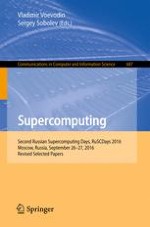2016 | Book
Supercomputing
Second Russian Supercomputing Days, RuSCDays 2016, Moscow, Russia, September 26–27, 2016, Revised Selected Papers
Editors: Vladimir Voevodin, Sergey Sobolev
Publisher: Springer International Publishing
Book Series : Communications in Computer and Information Science
